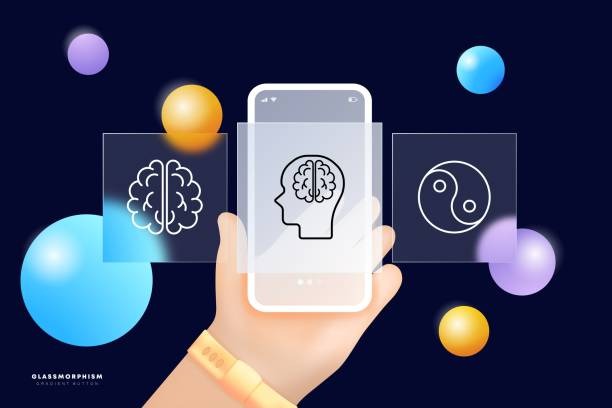We’ve all tapped “Yes” before fully reading a pop-up or being tempted by a red dot notification. These aren’t accidents—they’re nudges, subtle design choices that encourage action without forcing it. When used thoughtfully, nudges in mobile apps can improve user experience, increase engagement, and help people make better choices.
But what makes these nudges work? And how can app developers use them ethically and effectively?
Let’s dive into the psychology behind mobile nudges and explore how they can shape user behavior in ways that feel both helpful and natural.
What Is a Nudge?
A nudge is a small design cue that gently steers someone toward a particular action without taking away their freedom to choose. It could be a well-timed prompt, a visual highlight, or even the layout of a menu.
The idea comes from behavioral economics, which studies how people make decisions in real-world situations—not ideal ones. In mobile apps, nudges help users move forward, complete actions, or make choices they might otherwise skip or delay.
Why Nudges Work in Mobile Apps
Mobile users often scroll quickly, multitask, or use apps while distracted. A well-placed nudge can:
- Simplify decisions
- Reduce friction
- Encourage helpful habits
- Make features more discoverable
Unlike push notifications, which can feel intrusive, in-app nudges happen in context—while the user is already engaged. That makes them more likely to be welcomed and acted upon.
Types of Nudges That Work Well in Apps
- Visual Nudges
These include icons, animations, or color highlights that draw attention without demanding it. For example, a red dot on a tab subtly tells the user there’s something new or unfinished.
- Prompts and Tooltips
These show up just when the user might need a little help, like a short message explaining how to use a new feature or suggesting the next step in a process.
- Progress Indicators
Showing users how far they’ve come (and how close they are to finishing) taps into the human desire for completion. Even a simple progress bar can make a big difference.
- Scarcity and Time-Based Nudges
A limited-time offer or countdown can increase urgency without pressure. It works best when the benefit is clear and genuine.
Timing Is Everything
One key to effective nudging is context. A nudge is most useful when it appears just before the user is likely to drop off or need guidance. Poor timing, on the other hand, can feel disruptive.
For example, imagine a user who’s halfway through setting up their profile. A nudge that says, “You’re almost there! Complete your profile to unlock more features,” is more likely to succeed than a generic reminder sent an hour later.
In-app cues allow for this kind of timing as they respond to real-time user behavior. That’s why they’re more effective than external nudges like email or SMS.
Personalization Makes Nudges More Powerful
A nudge feels more natural when it’s tailored to the user. For example, instead of showing the same tooltip to everyone, an app might highlight a feature the user hasn’t tried yet or remind them of an unfinished task.
Personalization doesn’t mean over-complication. Even small touches—like using the user’s name or recommending actions based on past activity—can make a nudge feel more helpful and less like an interruption.
Avoiding Over-Nudging
Not every prompt is a good one. Too many nudges—or the wrong kind—can lead to “nudge fatigue,” where users start ignoring prompts or feel overwhelmed.
Here’s how to avoid it:
- Don’t interrupt: Nudges should appear at logical breakpoints, not in the middle of tasks.
- Keep it optional: Let users dismiss nudges easily, and don’t push the same one multiple times.
- Balance encouragement with autonomy: Make users feel guided, not manipulated.
When done right, nudges are like a helpful friend offering a tip—not a pushy salesperson.
Nudges That Support User Goals
One of the best ways to earn trust through nudging is to focus on user-first goals. Help people reach what they want to accomplish rather than what the business wants.
For instance, if a user is trying to build a habit—like logging meals, practicing a language, or saving money—nudges can remind and reward them along the way. A scratch card at the end of a 7-day streak, for example, can feel like a well-earned bonus, encouraging them to keep going.
This kind of reinforcement supports habit formation while also making the app feel rewarding and motivating.
Subtle Design Tweaks That Guide Action
Sometimes, the most effective nudges aren’t obvious at all. Design choices like button placement, color contrast, or even the default option in a menu can guide users gently toward a better path.
For example:
- A pre-selected default setting encourages quick decision-making.
- A larger “Confirm” button next to a smaller “Cancel” button subtly directs behavior.
- Greying out skipped steps can make users curious about what they missed.
These small choices add up. They influence behavior without the user ever feeling pushed.
Ethical Use of Nudges in Mobile Apps
It’s important to use nudges responsibly. They should help users, not trick them. Here are a few principles to keep in mind:
- Be transparent: Make sure users understand what’s happening and why.
- Respect privacy: Don’t use personal data in nudges without consent.
- Focus on value: The best nudges help users do things they’ll feel good about later.
When done ethically, nudging builds trust. And trust leads to retention, loyalty, and long-term engagement.
Final Thoughts: Nudging with Intention
Nudges in mobile apps aren’t magic—they’re design tools rooted in real human behavior. When used with care, they can guide users toward actions that benefit both the user and the app.
Whether it’s a progress bar that motivates, a timely prompt that encourages completion, or something more playful—like a scratch card—nudges work best when they feel natural, timely, and rewarding.
So the next time you plan a product update, pause to ask: What subtle cue could help users take the next step—on their terms?


